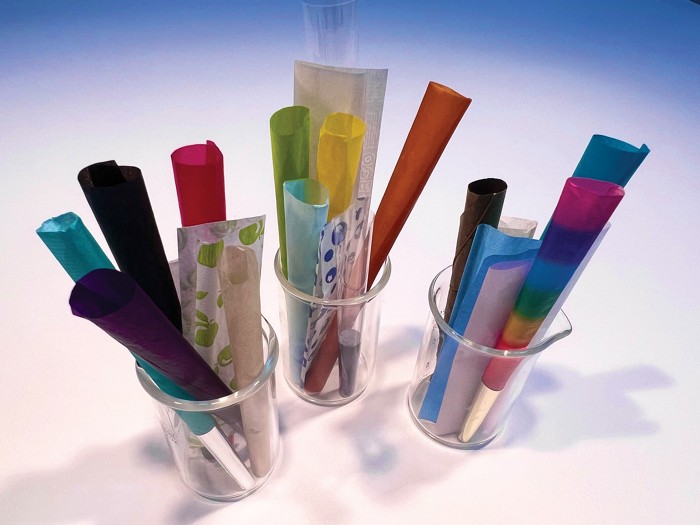Advertisement
Grab your lab coat. Let's get started
Welcome!
Welcome!
Create an account below to get 6 C&EN articles per month, receive newsletters and more - all free.
It seems this is your first time logging in online. Please enter the following information to continue.
As an ACS member you automatically get access to this site. All we need is few more details to create your reading experience.
Not you? Sign in with a different account.
Not you? Sign in with a different account.
ERROR 1
ERROR 1
ERROR 2
ERROR 2
ERROR 2
ERROR 2
ERROR 2
Password and Confirm password must match.
If you have an ACS member number, please enter it here so we can link this account to your membership. (optional)
ERROR 2
ACS values your privacy. By submitting your information, you are gaining access to C&EN and subscribing to our weekly newsletter. We use the information you provide to make your reading experience better, and we will never sell your data to third party members.
Consumer Safety
Reactions
November 21, 2021
| A version of this story appeared in
Volume 99, Issue 42
Letters to the editor
Harry P. Schultz
We recently lost Harry P. Schultz, a chemistry professor from the University of Miami (C&EN, Feb. 8, 2021, page 37). Few people know that Harry deserves the credit for being the first person to publish the icosahedral buckyball geometry for a 60-carbon atom molecule. His 1965 paper on polyhedranes and prismanesis a landmark publication (J. Org. Chem. 1965, DOI: 10.1021/jo01016a005). I have always regretted in those exciting days at Rice University in 1985 that we missed Harry’s publication and failed to cite his seminal contributions. There are far too few publications documenting his contributions.
Sean O’Brien
Dallas
Tobacco products
C&EN does not cover tobacco product news, tobacco regulatory actions, or published chemical research of tobacco products (e.g., electronic nicotine delivery systems, also known as e-cigarettes) as often as topics related to drugs, medical devices, petrochemicals, agrochemicals, etc. This was noticeable when I read the article “US FDA Targets Flavored E-cigarettes”(Sept. 6, 2021, page 19) and saw language such as “marketing approval” and “FDA approval” used for e-cigarettes, a tobacco product. This can be misconstrued since tobacco products are not evaluated using the same standard for medical products, which must be “safe and effective” to receive US Food and Drug Administration approval. Since there is no known safe tobacco product, tobacco products are evaluated according to a public health standard that considers the risks and benefits to the population as a whole, including users and nonusers. Because of this different health standard, tobacco products receive marketing authorizations, not approvals. More details can be found at www.fda.gov/tobacco-products.
Trevor Harris
Tallahassee, Florida
Natural gas flares
The recent cover story on methane (C&EN, Oct. 25, 2021, page 28) brings back the spectacular natural gas–flaring scenes that I experienced when working as an engineer in the oil field. Natural gas, produced mostly from gas wells and consisting mainly of methane, can also be produced from crude oil wells. In areas lacking gas transportation infrastructure such as gas pipelines, the natural gas extracted alongside the crude oil is often burned (flared) off as waste, as this may be the cheapest way to deal with the unwanted gas for the operators. As mentioned in the report, “methane’s climate-warming potential is 84 times as high as carbon dioxide’s,” so it seems better to burn this natural gas away than simply release it into the atmosphere. Natural gas flaring, however, does generate a large quantity of carbon dioxide, a greenhouse gas, along with escaped (unburned) methane and pollutants such as sulfur dioxide. Should the relevant government regulations become more strict, natural gas–flaring activities can be suppressed, which in turn can encourage people to deal with this gas in more beneficial ways or to reduce greenhouse gas emissions and to conserve natural resources at the same time. Various approaches have been tried to reuse this natural gas, and some appear to be both economically viable and environmentally friendly. As an example, the natural gas coming out with the crude oil can be reinjected into the oil reservoir to increase the pressure therein, which will help enhance the oil production while keeping the methane underground.
Leiming Li
Sugar Land, Texas
Chemistry Nobel
I am somewhat agog at the citation for the 2021 Nobel Prize in Chemistry: “Benjamin List and David MacMillan are awarded the Nobel Prize in Chemistry 2021 because in 2000 they, independent of each other, developed a third type of catalysis. It is called asymmetric organocatalysis and builds upon small organic molecules.” As professor List has noted, the Hajos-Parrish-Eder-Sauer-Wiechert reaction has been known since the early 1970s (and is described in detail in many places, including Wikipedia). As he and colleagues describe in a paper, it “represents not only the first asymmetric aldol reaction invented by chemists but also the first highly enantioselective organocatalytic transformation.” It also happens to be a reaction we have been using in our department for one of our undergraduate labs for about 25 years. I would have thought the Nobel Prize committee might display a little more due diligence in citing the origins of asymmetric organocatalysis. My comment is in no way intended to be a criticism of the excellent research contributions of professors List and MacMillan, and their many coworkers.
Ralph Whitney
Kingston, Ontario




Join the conversation
Contact the reporter
Submit a Letter to the Editor for publication
Engage with us on Twitter